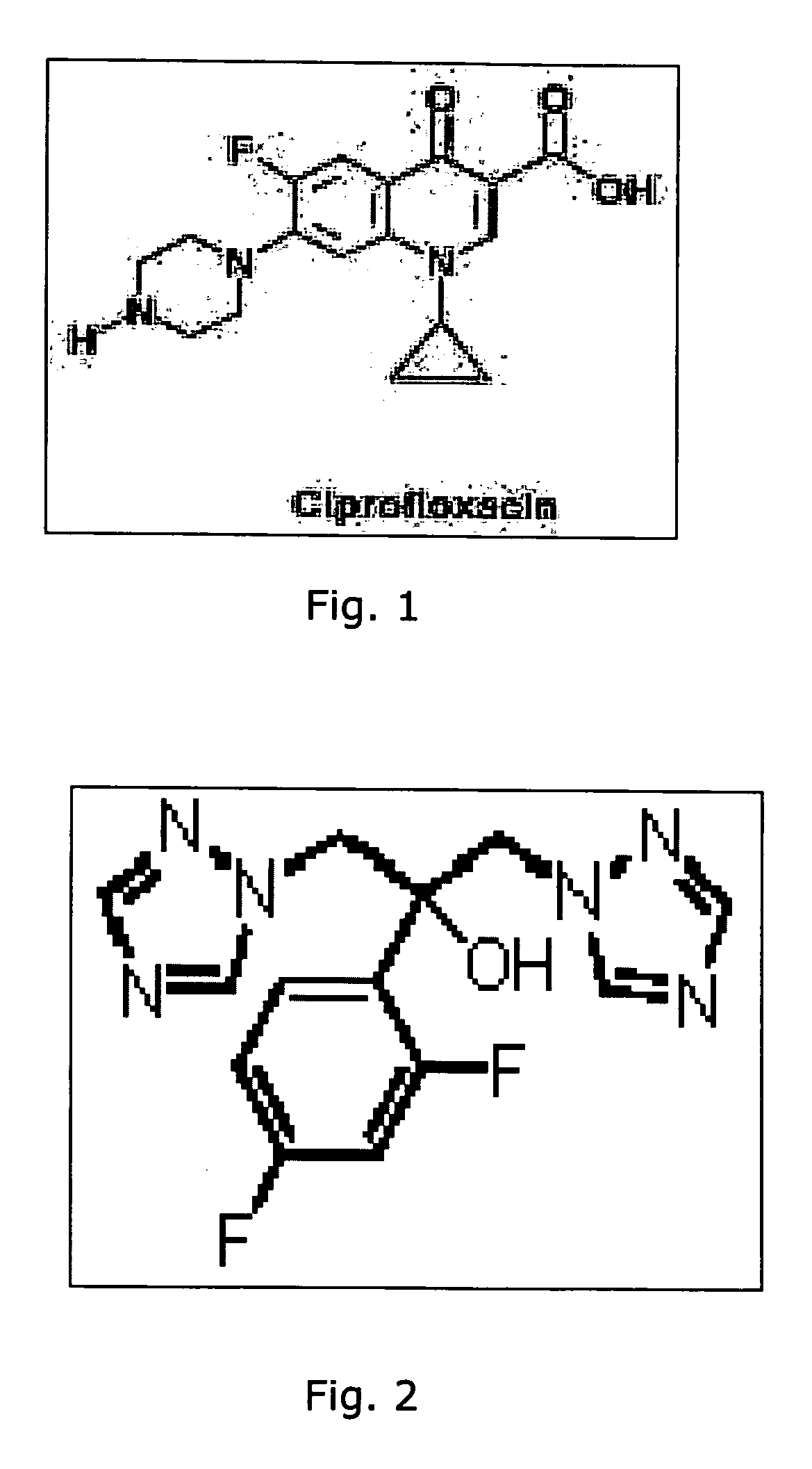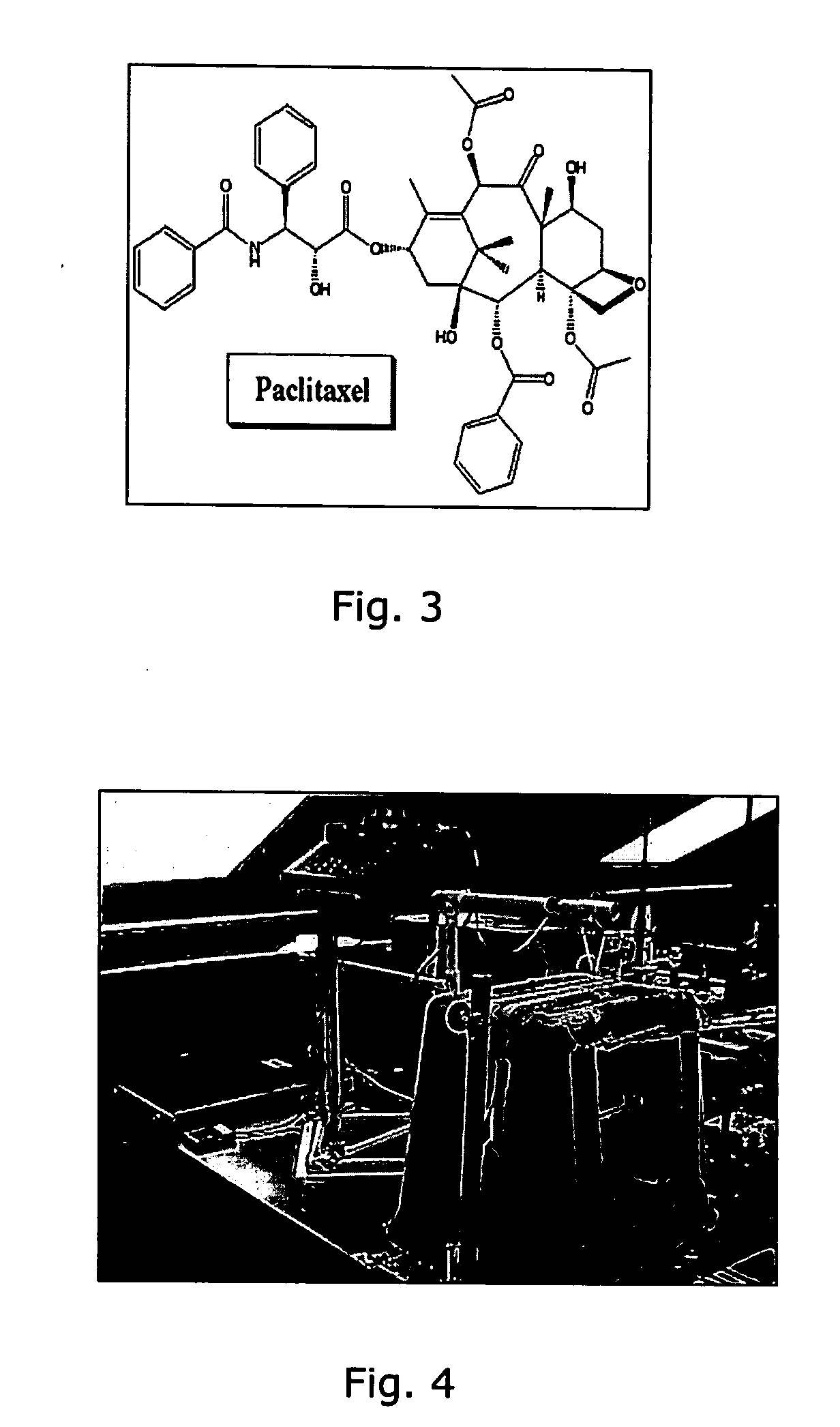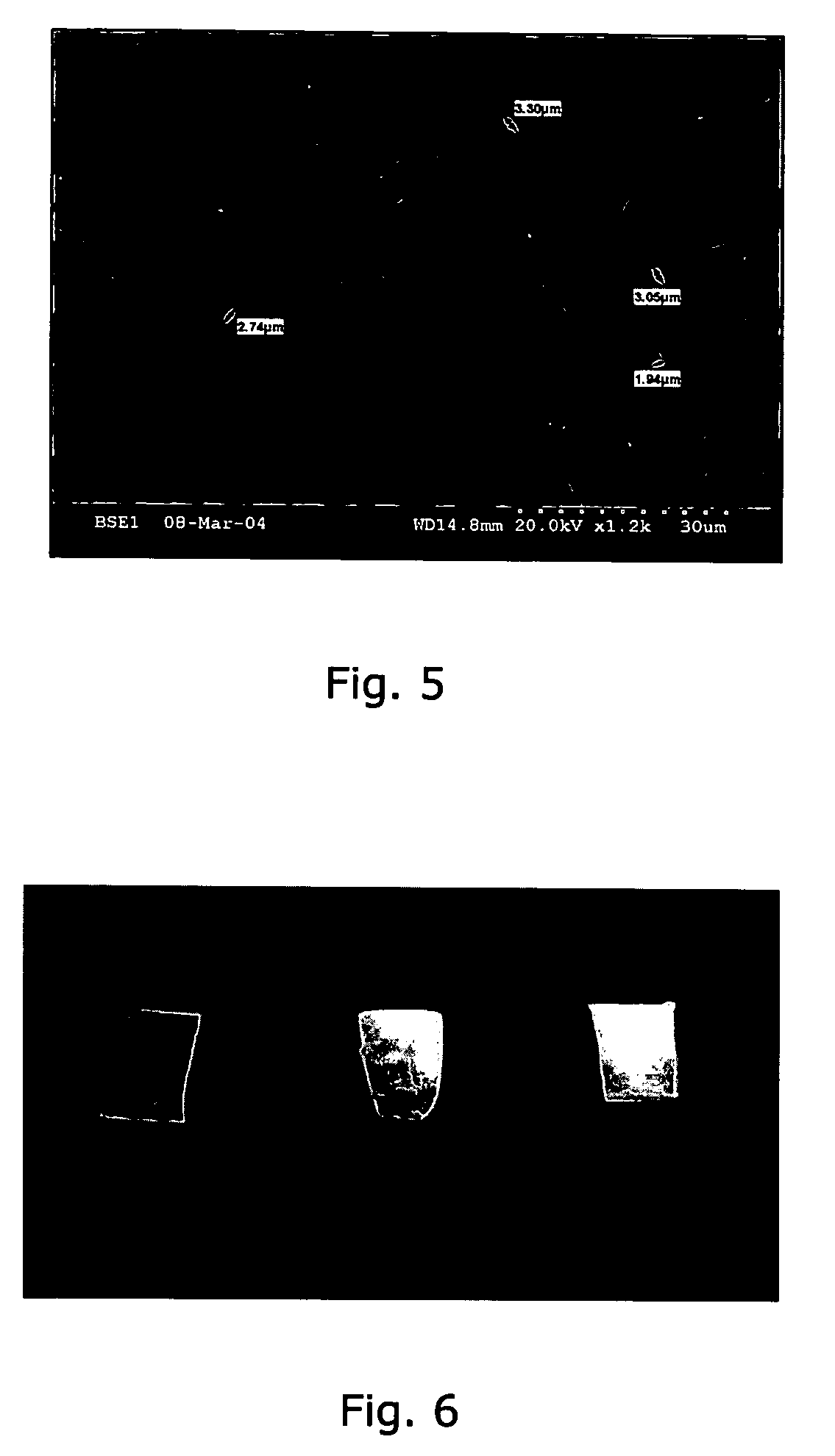Although utilization of these medical articles and devices has improved the health and
quality of life for the
patient population as a whole, the in-vivo application of all such medical implements are prone to two major kinds of complications: infection and incomplete / non-specific cellular healing.
Today,
surgical site infections account for approximately 14-16% of the 2.4-million nosocomial infections in the United States, and result in an increased patient morbidity and mortality.
Similarly, unregulated cellular growth affects various medical devices such as stents and vascular grafts.
Occlusion rates for diseased blood vessels after placement of a bare metallic
stent (
restenosis) have been reported as high as 27%, a significant problem based on the 1.1 million stents annually implanted.
Moreover, since the currently available biomaterials in these medical articles and devices are typically comprised of foreign polymeric compounds, these biomaterials do not emulate the multitude of dynamic biologic and healing processes that occur in
normal tissue; and consequently, the cellular components normally present within native living tissue are not available for controlling and / or regulating the reparative process.
Of these mortalities, 40% have been attributed to uncontrolled bleeding at the trauma site; and overall, traumatic injuries have resulted in a total cost of $260 billion to the healthcare
system, thereby accounting for 12% of all medical spending.
Any penetration of the
human body carries with it the risk of potential infection by microbes.
This risk pertains particularly to traumatic wounds incurred by accident or negligence; to
wound treatment procedures which utilize a wide range of materials for closure; and to the different kinds of articles used for
skin penetrations and / or body wounds.
Although utilization of these therapeutic / prophylactic treatments has markedly improved the overall health and
quality of life for all persons, and especially an aging
patient population, all such medical articles, manufactures, and devices are commonly susceptible to and routinely suffer from two kinds (or categories) of major complications.
Infection, whether caused by viruses,
bacteria or fungi, remains as one of the major complications associated with utilizing therapeutic biomaterials, and typically occur at either cute or
delayed time periods after in-vivo use or implantation of the material or device.
Surgical site infections account for approximately 14-16% of the 2.4-million nosocomial infections in the United States, and result in an increased patient morbidity and mortality.
Infection therefore remains one of the major complications associated with utilizing biomaterials, whether employed in a
percutaneous or implantable fashion.
Release of the
antimicrobial agent was controlled by bacterial adhesion to the surface, which resulted in antibiotic cleavage and release.
While this degree of antibiotic coverage is adequate for small localized contaminations, it is clear that large infectious inoculums are not addressed.
There are several potential problems with utilizing this
system in that: (1)
polymer coating onto the device can be inconsistent, resulting in areas with minimum / no localized
drug release; (2)
polymer coating efficiency can be limited based on the device design or composition of the base material; (3)
drug release is dependent on degradation of the
polymer reservoir, resulting in inconsistent
drug release; and (4) application of the exogenous polymer can have adverse effects on tissue / organ healing or upon the
biocompatibility (i.e. increasing thrombogenecity) of the original
implant.
Unregulated microbial growth will markedly affect any and all medical devices implanted in-vivo, such as stents and vascular grafts.
The
occlusion rates for diseased blood vessels after the in-vivo placement of a bare metallic
stent (i.e.,
restenosis) have been reported as high as 27% of patients, a significant problem based on the approximately 1.1 million stents annually implanted.
Also, since
biocomposite materials are often comprised at least in part of
metal and / or foreign polymeric materials, the cellular moieties and agents normally present within the
native tissue of the patient are not present for controlling and / or regulating the reparative process.
A commonality among this category of complications is that the currently available biomaterials do not emulate the multitude of dynamic biologic and reparative processes that typically occur as part of
normal tissue healing.
However, this type of in-vivo developed, layered endothelial cellular incorporation does not often occur in actuality or fact, thereby predisposing the implanted biomaterials to infection and
thrombosis.
Clearly, the failure of appropriate
cell type
growth development to occur in-situ for these biomaterials significantly limits their use in-vivo.
This unfortunate complication is evident both instent deployment as well as with the implantation of vascular grafts.
Unregulated cellular growth often occurs within an endovascular
stent, and at the material /
artery interface for prosthetic vascular grafts; and this event results in the inevitable narrowing of the
blood vessel lumen, with subsequent occlusive
thrombosis occurring routinely.
These include: (1) bacterial pathogens recognize and will bind to these
peptide sequences; (2) non-endothelial
cell lines also will bind to these sequences; (3) patients requiring a seeded
cell material, such as for implanting a
vascular graft, have few donor endothelial cells, and therefore such cells must be initially grown in culture; and (4) endothelial
cell loss to shear forces from flowing blood remains a medically serious obstacle.
Utilizing these reported techniques to incorporate growth factors onto the surface of a biocomposite material matrix, however, does have a number of particular limitations.
These include the following problems: (1) the
growth factor sometimes is rapidly released from the matrix; (2) any degradation of the underlying matrix re-exposes a potentially thrombogenic surface; (3) endothelialization of the
biomaterial surface sometimes is not uniform; and (4) the release of non-endothelial
specific growth factor is not confined to the
biomaterial matrix, thereby exposing the “normal” distal
artery to the
growth factor.
While some synthesis processes have been established for the use of these polymer compounds, some of the major drawbacks to advancing these materials into a clinical and / or therapeutic setting have been the well established significantly low
break point and tear strength of the fabricated materials.
The lack of overall material strength has been one of the major obstacles for developing novel nanofibrous medical devices.
In addition, while inclusion of bioactive agents has been accomplished for several other polymers (such as
polyurethane,
PLGA, alginate and collagen), the
electrospinning technique has not been realized for
polyethylene terephthalate (“PET”), or “
polyester” as understood generally in
textile circles, until recently.
However, the Ma et al. reported technique requires a
surface modification in which
formaldehyde and several cross-linkers were utilized post-
spinning subsequently to incorporate
gelatin, owing to the high temperatures employed in their manufacturing process.
These modification procedures are and remain a major issue because of their high temperature requirements and the consequential failure of the
protein (or other
temperature sensitive agent) to maintain its characteristic
biological activity throughout the material fabrication process.
 Login to View More
Login to View More 


